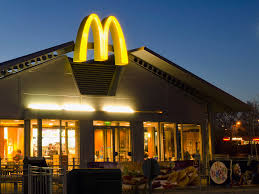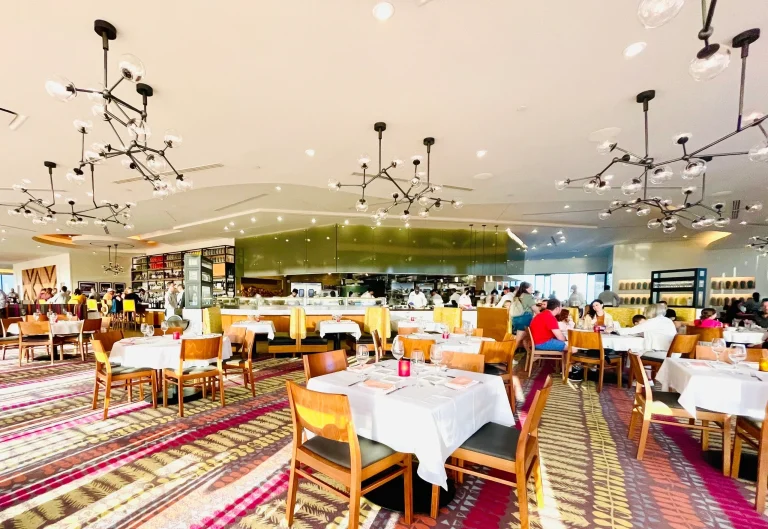What Countries Don’t Have McDonalds? A Global Overview
Are You Curious To Know About What Countries Don’t Have McDonalds? When considering the global reach of McDonald’s, it’s surprising to learn about the countries that remain untouched by this iconic fast-food giant. McDonald’s operates in numerous nations and is known for its golden arches and diverse menu, yet many places still need a single outlet.
While some regions, particularly in Africa and Asia, display a burgeoning appetite for fast food, they still lack McDonald’s presence. In other instances, past franchises have closed due to local disputes or economic challenges. This overview delves into the countries where McDonald’s has yet to make its mark, exploring the reasons behind their absence and what this signifies regarding global dining trends.
Table of Contents
Introduction to McDonald’s Global Presence

McDonald’s has an extensive global presence, making it a household name. It serves millions daily with over 36,900 outlets in more than 100 countries. Its iconic golden arches are a familiar sight worldwide. The franchise operates predominantly outside the U.S., accounting for two-thirds of its revenue. Countries like Japan, China, and Germany boast hundreds of locations. Transitioning from one market to another, McDonald’s adapts its menu to local tastes.
For instance, you’ll find McAloo Tikki instead of beef burgers in India. This adaptability fuels its widespread appeal. However, despite its vast network, certain countries remain McDonald ’s-free zones. Economic instability, political issues, and cultural differences play significant roles. As McDonald’s grows, understanding its global dynamics offers intriguing insights.
Countries Without McDonald’s
Here’s a table listing the countries without McDonald’s restaurants:
| Countries Without McDonald’s |
| Afghanistan |
| Albania |
| Algeria |
| Angola |
| Armenia |
| Bangladesh |
| Barbados |
| Belize |
| Benin |
| Bhutan |
| Bolivia |
| Botswana |
| Brunei |
| Burkina Faso |
| Burma (Myanmar) |
| Burundi |
| Cambodia |
| Cameroon |
| Cape Verde |
| Central African Republic |
| Chad |
| Comoros |
| Congo |
| Congo, Democratic Republic of |
| Djibouti |
| Dominica |
| East Timor |
| Equatorial Guinea |
| Eritrea |
| Ethiopia |
| Gabon |
| Gambia |
| Ghana |
| Grenada |
| Guinea |
| Guinea-Bissau |
| Guyana |
| Haiti |
| Iceland |
| Iran |
| Iraq |
| Ivory Coast |
| Jamaica |
| Kazakhstan |
| Kenya |
| Kiribati |
| Korea, North |
| Kyrgyzstan |
| Laos |
| Macedonia |
| Madagascar |
| Malawi |
| Maldives |
| Mali |
| Marshall Islands |
| Mauritania |
| Mauritius |
| Micronesia |
| Mongolia |
| Montenegro |
| Mozambique |
| Namibia |
| Nauru |
| Nepal |
| Niger |
| Nigeria |
| Palau |
| Papua New Guinea |
| Rwanda |
| Saint Kitts and Nevis |
| Saint Lucia |
| Sao Tome and Principe |
| Senegal |
| Seychelles |
| Sierra Leone |
| Solomon Islands |
| Somalia |
| South Sudan |
| Sudan |
| Swaziland |
| Syria |
| Tajikistan |
| Togo |
| Tonga |
| Tunisia |
| Turkmenistan |
| Tuvalu |
| Uganda |
| Uzbekistan |
| Vanuatu |
| Yemen |
| Zimbabwe |
Countries in Africa without McDonald’s

McDonald’s has limited its footprint in Africa in only four of the 54 countries. These countries include Morocco, Egypt, South Africa, and Mauritania. Despite Africa’s growing population and increasing demand for fast food, the fast-food giant remains cautious. The combined total of McDonald’s outlets in these nations is about 387. Interestingly, this is fewer than the 393 McDonald’s outlets in Mexico alone.
Talks of expansion to countries like Ghana, Zimbabwe, and Kenya have surfaced. However, these plans were eventually shelved, reflecting the market entry challenges. Economic factors and logistical issues play significant roles. For now, African residents desiring a McDonald’s meal must head either north or south. Africa’s diverse market dynamics continue to pose opportunities and obstacles for McDonald’s expansion strategy.
Countries in Asia without McDonald’s
Despite having a significant number of McDonald’s outlets, Asia still has notable absences. North Korea, for instance, remains devoid of McDonald’s due to its strict political regime. Similarly, Iran has no McDonald’s outlets, primarily due to long-standing political tensions with the United States. Afghanistan is another country where McDonald’s has yet to establish a presence.
The ongoing conflict and instability make it an unfavorable environment for such franchises. Cultural factors and economic conditions deter McDonald’s from setting up shop in Bhutan and Yemen. While the fast-food giant thrives in countries like Japan and China, these regions highlight the complexities of global expansion. Clearly, political, economic, and cultural barriers continue to influence McDonald’s footprint in Asia.
Countries in Africa without McDonald’s
Africa is home to over a billion people, yet McDonald’s is only present in four out of 54 countries: Morocco, Egypt, South Africa, and Mauritania. Combined, these nations host around 387 outlets, starkly contrasting Mexico’s 393 locations. Despite Africa’s growing middle class and increasing urbanization, the fast-food giant faces significant hurdles. Economic instability, logistical issues, and political challenges hinder its expansion.
Talks of launching McDonald’s in Ghana, Zimbabwe, and Kenya have surfaced over the years but have yet to be shelved. Africans craving a Big Mac must travel either north or south. The African market’s diverse landscape presents opportunities and challenges for McDonald’s, making it a complex region for expansion.
McDonald’s in the Americas
While McDonald’s thrives in the United States and Canada, other American countries tell different stories. In Cuba, political ideologies have kept McDonald’s out. Bolivia saw its outlets close due to political instability, impacting profitability. In Guyana, cultural preferences and economic conditions deterred McDonald’s presence. Meanwhile, Mexico boasts more outlets than Africa combined, highlighting a contrast.
Central America sees mixed results; Costa Rica enjoys multiple outlets, while Honduras remains without. Transitioning south, Brazil and Argentina house hundreds of locations, fueling local economies. However, Venezuela’s financial crisis led to McDonald’s withdrawal. Even in prosperous regions, the fast-food giant faces challenges. Only a few islands, like Puerto Rico and Trinidad, have outlets in the Caribbean in the Caribbean. Each country’s unique socio-economic landscape shapes McDonald’s regional footprint.
Political and Economic Factors Affecting McDonald’s Presence

- Political Instability:
In countries like Bolivia, political unrest has directly impacted the ability of McDonald’s to operate profitably. Frequent changes in government and regulatory policies create an unpredictable business environment.
- Economic Crisis:
Iceland experienced the closure of all its McDonald’s outlets in 2009 due to the economic downturn, which made importing necessary food products financially unfeasible. Economic instability often results in high operational costs.
- Trade Sanctions:
Nations such as Iran and North Korea have no McDonald’s due to trade sanctions imposed by the U.S. These restrictions hinder any business relationship and supply chain logistics necessary for the fast-food giant to operate.
- Regulatory Barriers:
In places like Bermuda, stringent regulations and local laws prevent the establishment of franchised restaurants. Regulatory frameworks can either facilitate or obstruct market entry.
- Currency Fluctuations:
Macedonia faced closures partly due to financial disputes linked to currency volatility. Unstable currency exchange rates can impact profitability and operational consistency, making some markets less attractive for expansion.
Socio-Cultural Factors
| Factor | Description |
| Local Dietary Preferences | Traditional dietary habits may not align with McDonald’s menu, reducing its appeal in some regions. |
| Religious Restrictions | Religious practices, such as prohibitions on pork or beef, can limit McDonald’s ability to offer certain foods. |
| Health Consciousness | Growing focus on health and wellness can lead to resistance against fast food in favor of organic, local options. |
| Cultural Identity | National pride and a focus on preserving cultural heritage may deter the acceptance of foreign fast-food chains. |
| Social Perceptions | Fast food is sometimes associated with unhealthy eating and low quality, impacting public acceptance of McDonald’s. |
Supply Chain Challenges
| Challenge | Description |
| Geographic Barriers | Remote regions make it difficult to transport perishable items, leading to higher costs and logistical issues. |
| Infrastructure Limitations | Poor road networks and inadequate storage facilities hinder reliable supply chains in underdeveloped countries. |
| Local Supplier Issues | Difficulty in finding local suppliers that meet McDonald’s quality standards complicates ingredient sourcing. |
| Import Restrictions | Strict import regulations and tariffs create challenges in bringing in essential ingredients and packaging. |
| Political Instability | Unrest and frequent political changes disrupt supply chains, affecting transportation routes and labor availability. |
Future Prospects for McDonald’s Expansion

McDonald’s future expansion holds intriguing possibilities. Emerging markets in Africa and Asia present untapped potential. Urbanization and rising middle classes could spur new outlets. Meanwhile, technological advancements streamline supply chains, easing logistical challenges. Sustainability initiatives resonate with global consumers, aligning with McDonald’s goals. However, geopolitical shifts may impact strategic decisions.
Adapting menus to local tastes remains crucial for success. Collaborations with local partners can pave the way for smoother market entry. Countries like Vietnam and Nigeria may see future openings. Additionally, McDonald’s investment in digital transformation enhances customer experience. Delivery services and mobile apps broaden their reach. As the world evolves, so does McDonald’s strategy. Their adaptability and resilience suggest exciting growth ahead.
Frequently Asked Questions
Why are there no McDonald’s in some countries?
In many cases, political and economic instability prevents McDonald’s from operating. Issues like trade sanctions, currency fluctuations, and regulatory barriers create an unfavorable environment for the fast-food chain.
Which African countries have McDonald’s outlets?
McDonald’s operates in four African countries: Morocco, Egypt, South Africa, and Mauritania. These countries collectively have about 387 outlets, while the rest of the continent remains McDonald ’s-free.
Why did McDonald’s close in Iceland?
McDonald’s closed all its outlets in Iceland in 2009 due to the economic crisis. The collapse of the Icelandic Krone made importing necessary food products too expensive, rendering the business unsustainable.
Will McDonald’s expand to more countries in the future?
McDonald’s may expand to more countries as emerging African and Asian markets show potential. Urbanization, rising middle classes, and technological advancements can facilitate this growth, although geopolitical and cultural factors will continue to play a role.
Conclusion
McDonald’s global journey is a blend of triumphs and challenges. Its absence in some countries underscores the complexities of international business. Political, economic, and cultural barriers significantly impact their expansion strategy. However, the fast-food giant remains adaptable and resilient. Emerging markets, especially in Africa and Asia, offer future opportunities. Innovations in technology and supply chain management ease entry into new regions.
Additionally, aligning with local tastes and sustainability trends can enhance McDonald’s appeal. The fast-food industry is ever-evolving, and McDonald’s adaptability suggests continued growth. Understanding why McDonald’s is absent in certain places reveals much about global dining trends. As they navigate these hurdles, McDonald’s future expansion remains an exciting journey.







